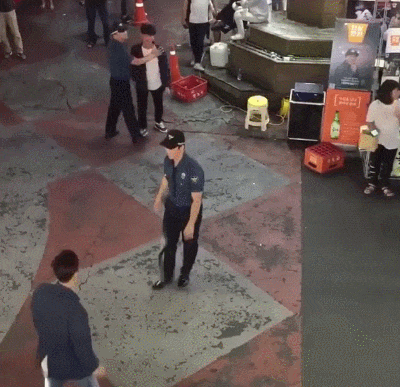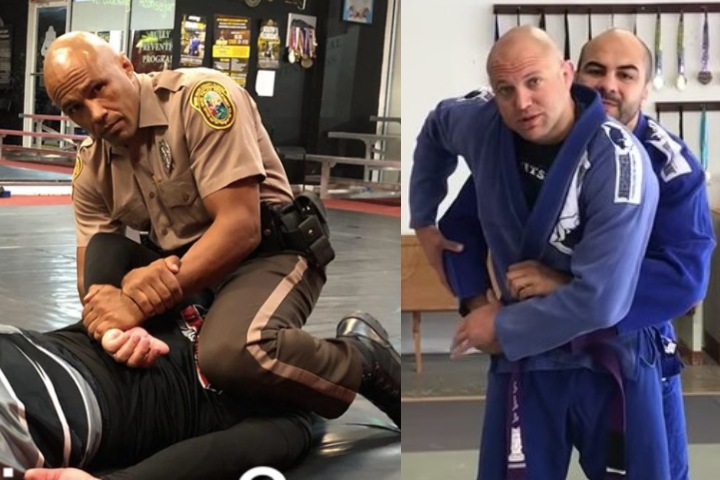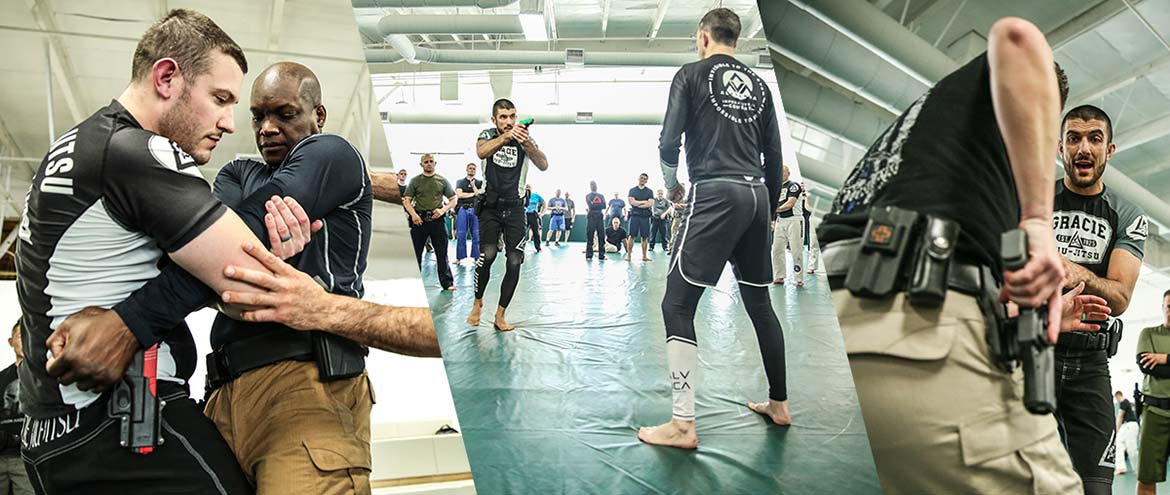Upcoming Events
No event available, please check back again, thank you.
Latest Articles
BJJ for Self Defence and Law Enforcement: How It Helps
15 December 2021
As much as we hate to admit it, the harsh truth is that crime and conflict will probably never stop. We’d love to be optimistic, but we need to be vigilant as well. Having some knowledge of martial arts helps people go about their day with security. That’s why people choose to practice BJJ for self defence, as much as for fitness and competition.
Of course, aside from regular citizens, even our police forces can benefit from martial arts.
-
Police Officers Keeping the Peace
Keeping things peaceful makes a big part of a police officer’s daily duties. We have them to thank for keeping communities safe for us and our families. Because they prevent crimes and catch criminals, we enjoy peaceful lives even outdoors.
Our law enforcers have gotten a bad rap recently due to a few bad apples (particularly due to a trigger-happy country). However, contrary to misguided belief, law enforcement is more than pulling out a gun and calling it a day.
It takes mental fortitude to keep calm and collected while de-escalating conflict. It takes physical capability to protect the people when the need arises. More importantly, it takes an impressive combination to stop offenders without hurting them.
(After all, the people we call criminals are also members of the community they protect. No matter how misguided these criminals may be.)
Police officers in South Korea calmly control a situation using martial arts
Is that even possible?
This is where BJJ for self defence and law enforcement comes in. BJJ aims to neutralize the opponent rather than strike them down. It allows police officers to protect themselves and the people around them. At the same time, it enables them to prevent conflict without anyone getting injured.
That’s not to say that other martial arts systems aren’t useful in keeping the peace.
-
4 Countries With Martial Arts in Law Enforcement
Martial arts have long played a pivotal role in law enforcement, tracing back as early as the Bronze Age. Historically, the ancient people fought through hand-to-hand combat.
That said, martial arts were only integrated into law enforcement training semi-recently. It was only in the 20th century that the military forces practised hand-to-hand. Here are some examples of countries and the systems they used:
1. America and Britain’s Defendu
Defendu is also called the Close Quarters Combat System. It incorporates boxing and jiu-jitsu techniques into a single comprehensive art. With emphasis on survival, there are techniques unfit for simulation. (Such as the eye-gouging depicted in the image above.) American and British soldiers used it in unarmed combat in World War II.
2. Israel’s KAPAP and Krav Maga
KAPAP is a Hebrew acronym for Krav Panim el Panim. It is a close-quarter fighting system of self-defence, unarmed combat, and defensive tactics. Soldiers used KAPAP, but the Israel Defense Forces later developed Krav Maga. Krav Maga includes practices that emphasize instinct and aggression. It also includes practical elements of street fighting.
3. China’s Junshi Sanda
Sanda combines traditional Kung Fu and modern fighting techniques. It is otherwise known as Chinese Kickboxing. Some elements you may find in Sanda are kickboxing, wrestling, sweeps, knees, and elbows.
4. Russia’s Sambo, Systema, and ARB
Russia also created its fair share of military hand-to-hand combat systems. These systems merge folk and international styles. The resulting system emphasizes functional elements used in real fighting situations.
-
4 Ways BJJ Helps
Let’s double back a bit by posing a much simpler question. How does BJJ fit into this law enforcement equation?
1. BJJ helps neutralize opponents with the least amount of injury.
Our law enforcers do have martial arts as part of their training regimen. It helps them defend themselves and deal with unarmed threats. And the techniques they learn are helpful in that aspect.
That said, lessening the risk of injury is not always part of the equation. It’s not that they aim to be violent. It’s just that most martial arts, in general, tend to be quite forceful.
People choose BJJ for self defence because it doesn’t rely on the use of force. Less forceful methods mean less risk of injury.
2. It works against opponents of all sizes.
(Just watch this 15-year-old girl submit a guy much bigger than her.)
BJJ began growing in popularity when Royce Gracie won three UFC championships. All three times against opponents bigger than himself. His wins introduced a novel approach to martial arts. It showed that smaller guys can win against bigger opponents with proper technique.
That’s why it has great potential in law enforcement as well. Our law enforcers aren’t always big, buff guys. We also have female officers and male officers with smaller statures. Lawbreakers are also very diverse in terms of size. It helps to learn techniques that work regardless of size differences.
3. It trains people to keep a critical mind under pressure.
BJJ can serve as a practical approach in de-escalating conflict and impending threats. Since it helps develop the ability to think on their feet, officers get rattled less easily.
Keeping calm and composed helps them view a situation with an analytical eye. They see what is happening and know how to deal with it. As a result, it improves their confidence in their own skills rather than their sidearms.
4. It reduces aggression and hostility.
One of the significant causes of aggression is overwhelming negative emotion. That said, it becomes clearer why some people are quick to violence when things get out of their control. BJJ promotes the practice of self-control and clear decision-making in a physical struggle. It has the potential to reduce aggression and violence in real-life encounters.
With BJJ, officers can learn to control and submit an offender with minimal injury.
-
BJJ for Self-Defense and Law Enforcement
The benefits of BJJ for self defence and law enforcement are immense. As people gain more knowledge about the gentle art, they recognize that fact more and more. BJJ training among law enforcers is becoming a common practice in many countries. (Part of this development is thanks to the initiative of BJJ organizations.)
Communities have initiated movements to integrate BJJ as a staple of law enforcement. They work to raise awareness of the benefits of BJJ for self defence and law enforcement. Ultimately, these all serve the community they belong to.
Here are some examples:
1. USA’s Adopt A Cop BJJ
The year 2020 has been laden with many controversial incidents involving cops. Many protested and petitioned to defund the police. Pro-MMA fighter Mitch Aguilar knew it was not the solution. And as a Navy SEALs former head combatives instructor, he knows what he’s talking about.
Aguilar believes that cops receive minimal training in managing and controlling combative situations. They barely knew BJJ for self defence, let alone for law enforcement. That would explain why they are likely to act based on fear and resort to lethal force. Defunding the police would only further aggravate the problem.
And so he founded Adopt A Cop BJJ and partnered with gyms across the US to empower the police force. How did they do this? By sponsoring cops until they reach their blue belt.
2. Australia’s ISR Matrix International
Luis Gutierrez founded The ISR Matrix International in 1996. Since then, it has worked alongside teams from numerous state and federal agencies. It provides strategic and tactical training. This training includes MMA and BJJ for law enforcement and armed forces.
Gutierrez served as a trainer and consultant. The US’ undercover agents and counter-terrorism teams learned a lot from him. From 2008 to 2019, ISR Matrix’s courses have gone across Australia and Asia.
3. Canada’s Alliance BJJ
Romero ‘Jacare’ Cavalcanti, 6th-degree black belt and direct student of Royce Gracie, formed Alliance in 2008. It is a BJJ team with a passion for law enforcement. The team members of its Canadian branch combined martial arts with years of front-line law enforcement experience. Today, they administer training courses and seminars to tactical officers and security personnel.
4. Royce Gracie’s GRACIE Law Enforcement Certification Program
Royce Gracie travelled the world to pass on his skills to military and police officers alike. His GRACIE Law Enforcement Certification Program (now called the Gracie Survival Tactics) is prominent in countries including the U.S., Canada, and the United Kingdom.
-
Final Thoughts
Exposure in BJJ would benefit law enforcers in terms of physical well-being, communication, and cultural understanding. Training BJJ has the potential to positively impact the communities they vow to protect.
It’s not impossible to build a safe space for both the citizens and police officers at the same time. With adequate funding, increased focus on unarmed and de-escalation tactics, and support from the state and the community, we can create a safe space to replace fear with faith.
If you enjoyed this article, check out the following resources:
History of BJJ: The Story of How Jiu Jitsu Became Brazilian
What is the BJJ Belt System and How Does It Work?









